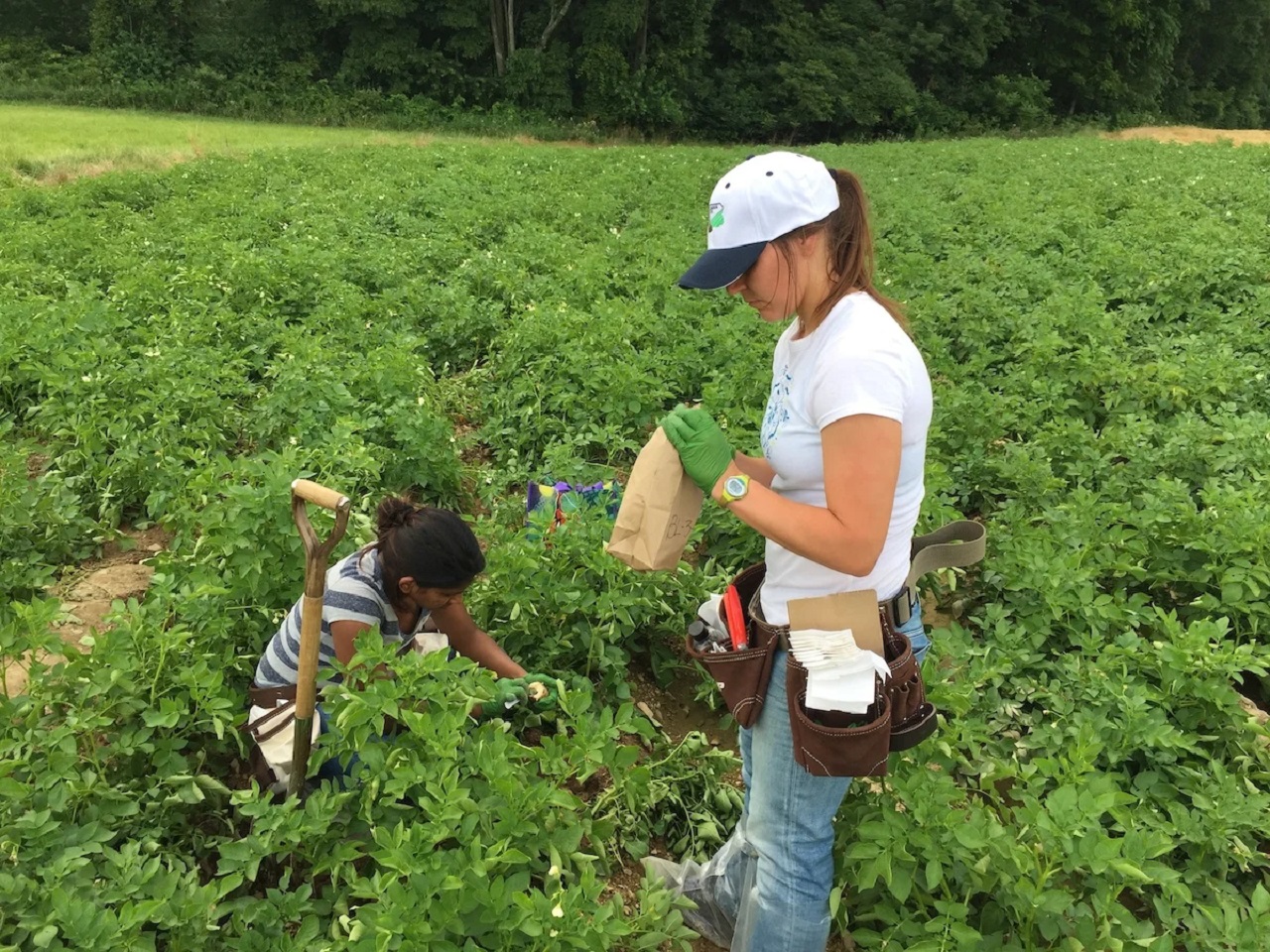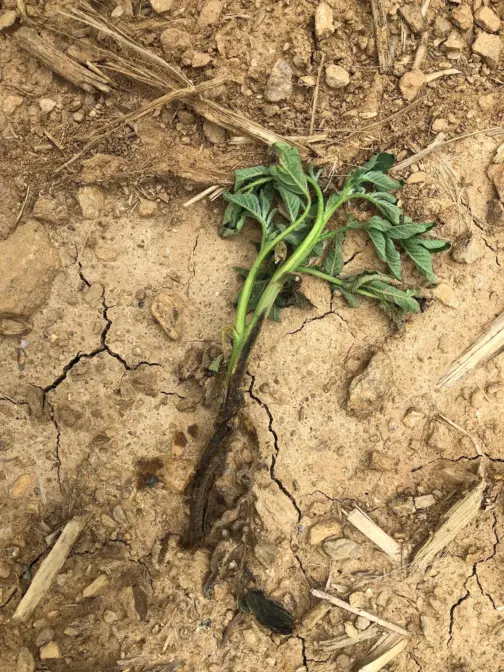
Penn State researchers collect suspect plants from a potato field. The samples will be studied further in their laboratory. (Courtesy of Robert E. Leiby)

Penn State researchers collect suspect plants from a potato field. The samples will be studied further in their laboratory. (Courtesy of Robert E. Leiby)

Penn State researchers collect suspect plants from a potato field. The samples will be studied further in their laboratory. (Courtesy of Robert E. Leiby)
Michael Brooks has been farming in South Jersey his whole life. He grows potatoes for local chip companies like Herrs and Utz. In 2016, he lost hundreds of thousands of dollars worth of potatoes to a potato disease.
The potato plants withered and died. The lower parts of the plants turned black.
“Once you have it, there’s nothing you can do about it. This is the frustrating part,” he said. “A lot of times in agriculture … if you see a plant get a disease or have an insect issue, there are remedies … this you couldn’t do anything with.”
Brooks said the mystery ailment that wrecked his potato harvest was the hardest he has been hit by a single plant disease in decades of experience as a farmer. To make matters worse, it hit after he had dealt with the damage from Hurricane Sandy in 2012.
“That really devastated us. We were finally getting back on our feet and then [2015] and [2016] come around,” he said. “It seems like sometimes in agriculture you’re playing catch up from things that are out of your control.”
After the 2016 outbreak, Penn State researchers collected samples from 26 potato fields in Pennsylvania to study the disease. They recently published their findings, where they managed to identify the specific types of bacteria responsible, some of which had not been identified in Pennsylvania before.
Carolee Bull, professor of plant pathology at Penn State, said it does not mean these bacteria are new, just that they had not been identified before.
“These organisms have probably been around for a long time,” she said. “As [our technologies] get better, we are able to distinguish bacteria from one another better.”

A young potato plant has wilted and died because of a bacterial infection. (Courtesy of Robert E. Leiby)
For example, she said that researchers recently identified a new species of bacteria and later found it in historic collections of plant samples from the mid 20th century.
Her team is now working on more research to find out exactly how the newly identified types of bacteria affect potato plants. She explains that a plant disease needs three things: an organism that causes the disease, a host plant that can be infected, and weather conditions that help the disease spread.
“We can’t change the weather, but we can look at management of these organisms and we can look at the cultivars that are being grown by Pennsylvania growers and say … ‘are those cultivars susceptible to the organisms we have in Pennsylvania?’”
She said the weather plays a role because some of these bacteria degrade the potato cells to turn the potato into liquid mush, which is called soft rot. Heavy rain can help the bacteria spread to other plants.
That’s partly what happened in 2015, said Bob Leiby, agronomist at the Pennsylvania Co-Operative Potato Growers. He said back then, the summer in the region was warm in June with lots of rain, whereas other potato-growing states in the northeast like Maine and New York have different climates. In 2015, he said some potato farms lost as much as 40% of their crop that year.
However, he added that Pennsylvania has a good crop this year with rain coming at the right time, so there is no expected shortage of potatoes.

A collection of interviews, photos, and music videos, featuring local musicians who have stopped by the WITF performance studio to share a little discussion and sound. Produced by WITF’s Joe Ulrich.
The days of journalism’s one-way street of simply producing stories for the public have long been over. Now, it’s time to find better ways to interact with you and ensure we meet your high standards of what a credible media organization should be.